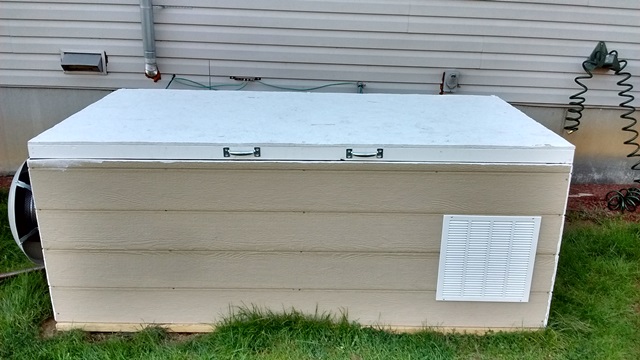
*Generator Sound Enclosure*
By: Spitfire
31 December 2020
Here are pics and commentary on our home built, pad mounted propane generator enclosure. This 14kW generator is rated for <= 68dBA sound across the audio spectrum. Measured with an Android spectrum analyzer application it showed 69dBA at no load and 72dBA at full load. Peaks at both loads were approximately the same audio frequency of 123.67Hz. At full load all frequencies between 50Hz and 1500Hz were >=45dBA. After the sound enclosure, the 123.67Hz peak was reduce from 72dBA to 62dBA at full load. (At no load the levels were lost in the ambient noise and the Android could not tell the difference between highway noise and generator noise) This is a reduction of 10dB which is fantastic. Every 3dB reduction is 1/2 of the perceived sound level so in the enclosure the noise is approximately 1/8 of what it was without the enclosure.
Here's what it looks like, how I built it and comments along the way.
Here's an outside walk around on the enclosure. Notice the large number of air vents; the number of these were determined experimentally by using a corded digital thermometer to measure inside temperature. My goal was to get it under 125F which I did but it needed a lot of vents.

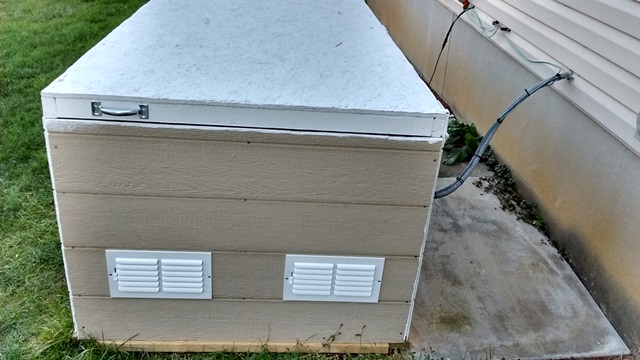
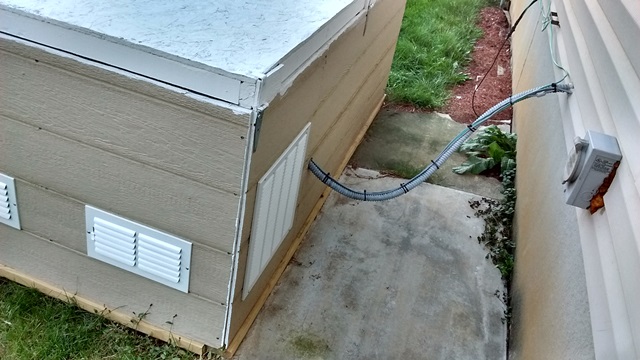
Note the giant attic vent fan mounted to the end of the enclosure. This is 1170CFM unit and was needed to properly cool the generator before I caught on that the exhaust dumped inside the housing and was adding significant heat. I might be able to get away with a smaller unit but it only draws a measured 220W so I don't care.
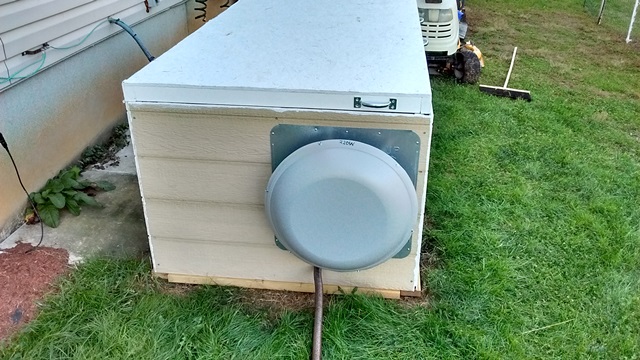
Now let's have a look inside. You'll see that I used standard wall framing techniques with studs on 24" centers where it fit and closer where it didn't. The overall outside enclosure size is 96"W x 48"D x 36"H. This provided ample room inside to clear all parts of the generator with the lid closed as well as give enough air space to open the generator doors, climb inside and work, for instance to change oil and filters. The enclosure is dried in with a weather proof siding similar to T1-11 but thinner and cheaper. It comes primes and rain resistant.
The lid is 1/2" OSB and hinged using 3 each large "T" strap hinges. I would have used pressure treated plywood but Covid-19 caused a shortage. I painted the OSB up good. I debated about using pneumatic struts to hold the lid up but in the end saved a lot of money by using an old push broom with a metal handle! Free and works fine.
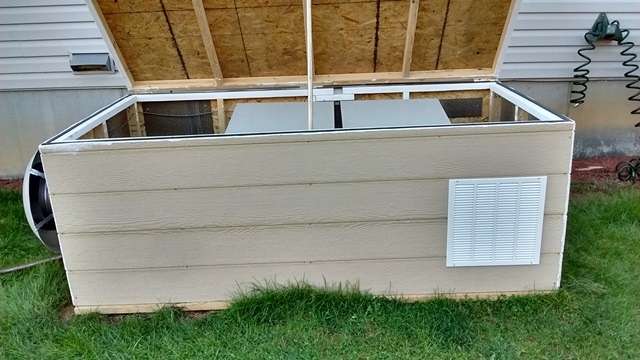
I used large short loop carpet tiles to line the inside of the thin wooden sides and ends. This helps prevent the sides and ends from vibrating and passing the sound through to the outside. They're pretty dense and work well, although if I could have found cheap shag rated for outdoor use I think it would have been even better. The tiles are simply screwed on with short sheet metal screws and flat washers. I was careful to select screws that wouldn't penetrate all the way through and leave stabby points outside the box.
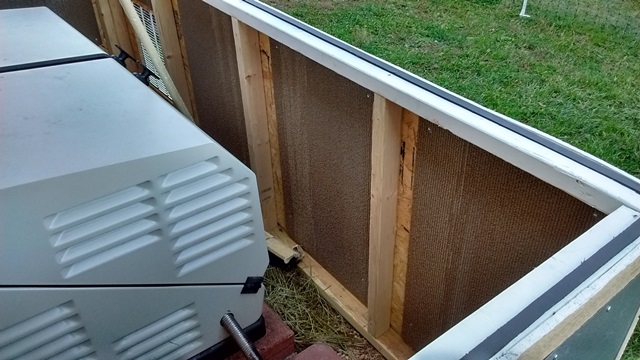
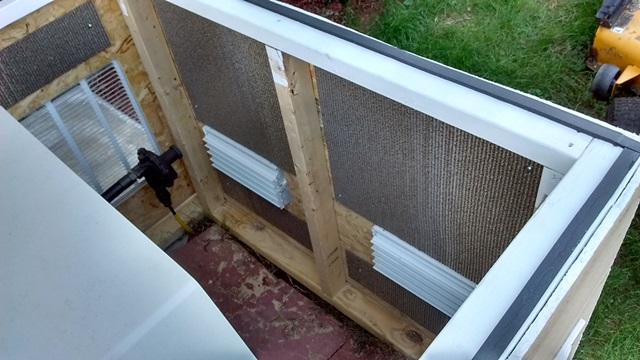
An inside picture of the attic cooling fan. I have since put a thermostat in series with the fan power instead of a junction box. The fan came with the thermostat and after trying (and sometimes forgetting) a simple manual switch I decided the automatic route was better. I set it to come on at 95F.
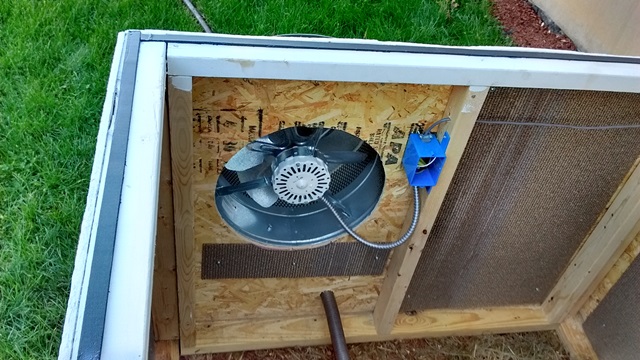
The exhaust proved interesting. Originally, the generator simply ran it through a decent sized muffler which exited onto the ground inside the metal generator enclosure. The genny has a powerful fan to flow it out through screen vent holes to the outside. I left it that initially but it overheated so I ended up cutting the exhaust pipe and running flexible piping outside the enclosure. This immediately took care of the excess heat problem, but you can see that the grass doesn't like it too much!
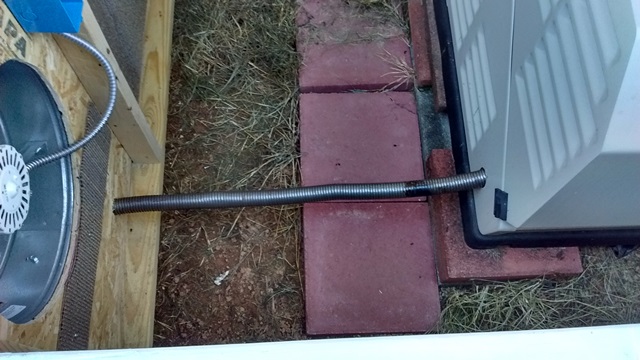
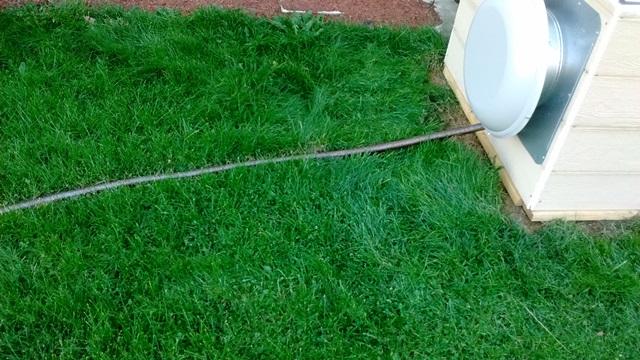
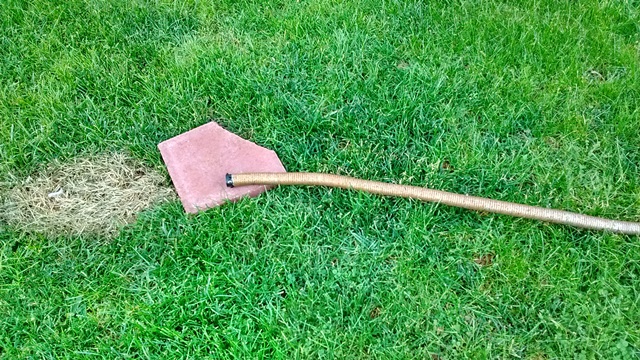
Finally, here's the end result on the spectrum analyzer. Most of the noise is now under 40dBA which is quite quiet. Even with noise bouncing off the side of the house it's possible to have a conversation with only very slightly elevated voice. The biggest improvement is virtually zero noise on the front and sides of the house. Previously it was quite easy to hear.
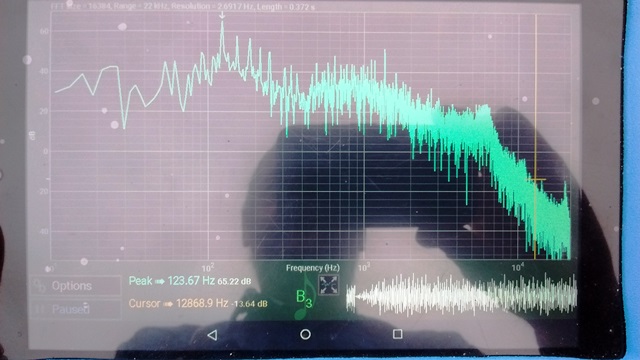
I hope that gives you some useful ideas.
Spitfire
www.alpharubicon.com
All materials at this site not otherwise credited are Copyright © 1996 - 2021 Trip Williams. All rights reserved. May be reproduced for personal use only. Use of any material contained herein is subject to stated terms or written permission.